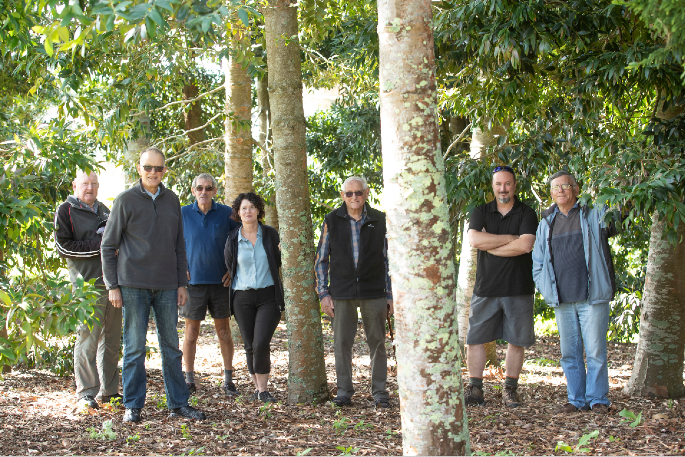The three hectares of residential zoned land in a Tauranga central suburb that is home to one of the world's largest collection of Kauri trees belongs to a dead man.
Tauranga residents who enjoy the arboreal sanctuary of Sydenham Botanical Park in Millers Rd, Brookfield, are invited to be involved in the future of the park, which is unique in that it is not owned by Tauranga City Council, but it is land left to Tauranga City residents by Frank Sydenham, one of Massey University's first horticulturists, who died in 1973.
'The park used to be the market garden around Frank's house,” says Brian Hodge, who held a public meeting last week at Brookfield Primary School.
'The meeting went well, but demonstrated the division that exists between the people who like it because it's an open community space where they can chase their dog, and the people who like it because of the big trees that are planted there. Both ideas can probably coexist.”
Brian is chair of the Sydenham Park Advisory Group, a group of volunteers which funds and manages the park's development. A retired chartered civil engineer and former senior council manager, Brian became involved when Guardian Trust, which manages Frank's bequest, was working with council to carry out Frank's wishes.
'Volunteer numbers have dwindled since planting started in 2005 and there are just eight of us left.
'Now that the end of the park's development into a subtropical botanical park is in sight, it is a good time to renew enthusiasm amongst the community.”
The meeting, which attracted nearly 50 people, was addressed by Kaimai orchard owner Graham Dyer, who donated most of the Araucaria (Kauri) Trees. Plans to complete the park development were discussed with suggestions added to a whiteboard.
The meeting canvassed what happens when the development is completed in two years' time, with interest expressed in continuing volunteer involvement of the tree collection, says Brian.
Already in the park there are 19 species of Kauri trees, with further planting scheduled in June. Both pergolas are complete and will have climbing and trailing plants.
Other plans include the completion of the Hinewa walk around the perimeter of the park. In consultation with local kaumatua Peri Kohu of Huria marae in Judea, the intention is to use the walk to tell historic stories about Ngai Tamarawaho.
Planting lilies and other white flowers, as well as xerophytes – plants that do not need watering –
is possible if new volunteers are found.
Brian says that from the meeting, a submission would be made to the Tauranga City Council's Long Term Plan, asking for additional funding.
He urges as many locals as possible to get involved in the future of the park.
'It's a place which many enjoy the trees and the flowers, sitting at the picnic tables eating fish and chips, walking the dog, flying kites – so we are hoping the community will join us in preserving it for future generations to enjoy.”
A website for the Sydenham Botanical Park has been developed at: www.sydenhampark.wordpress.com . To be involved in the future of the park, email: sydenhambotanicpark@gmail.com
How the park operates:
*Park development and funding- facilitated by the Sydenham Botanic Park Funding Trust and Advisory Group
*Funding sources- donations, volunteers, in-kind work from local businesses and applying for grants from charitable funding organisations
*Governance and park maintenance- provided by Tauranga City Council
*Sydenham Trust deed oversight- provided by the landowner Guardian Trust, which also administers the Frank Sydenham scholarship for Bay of Plenty horticulture students.

